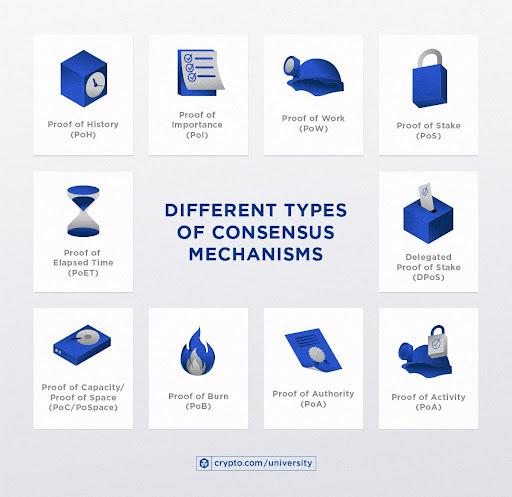
The ultimate paradise for a lot of CFO’s is a super quick and easy month-end close; however, all too often, this is quite a difficult and drawn out task. It doesn’t have to be quite so daunting; in fact, there are a few ways to help speed up your processes to make the month-end that much easier. While some of these involve full system overhauls, there are a few tips and tricks regarding workflow, team management, and personal organisation. So, let’s take a look at the different ways to bring your month-end close up to top speed.
Table of Contents
Keep yourself organised
As with anything, keeping yourself and your team organised is key; sitting back and hoping that things work out just because you want them to doesn’t tend to work out very well. Setting appropriate and relevant KPI’s for you and your team can go a long way. Creating a roadmap of goals and actions is a good method for helping with month-close; remember to take into account dependencies and workflows. Using a visual progress indicator, such as an Excel graph or Gantt Chart, provides an easy-to-monitor graphic that will allow you to track your goals and progress as the deadline approaches; the key part, however, is sitting down and taking the time to put together the plan to determine the timescales.
Maintain strong communication
What would happen in the event of a deadline coming up that you hadn’t told or explained to the rest of your team about? Your suppliers may not feel inclined to invoice you promptly, and your team may not hand in their journals as quickly as they are needed, and so things can fall out of place very quickly.
When setting your targets, make sure that you communicate exactly what is needed, and most importantly, why. If the team knows exactly what their roles are and what their part is in terms of the workload, as well as how it will affect other departments and teams, things will run a lot more smoothly.
Keep targets in mind
CFO’s will often complain about month-end closes not being completed early, however, they hadn’t set the targets to begin with. Obviously, this can cause a bit of confusion amongst the team.
What kind of goals do you wish to achieve?What kind of reports do you want to see and on what regularity? Assigning tasks and reports to individuals, teams and departments can help massively in keeping things on track.In any case, keeping your targets in mind as you draw closer to the deadline is important, as without them, the tasks can fall behind and run into a loop of dependencies, which is never good.
Utilise system features
A large number of company systems have a great many features and utilities that are never used to their full potential. While some features may have been implemented a long way in the past and never really picked up, there may also be features that have been added in recent updates that may have fallen under the radar. Keep automation in mind and see what your system is capable of.
Excel-lent? Not always
There’s no denying that Excel is a great piece of software; it’s flexibility and utility across all different aspects of a business makes it an invaluable addition to any company. However, over-reliance on spreadsheets when there are better methods to support a project or data set can be a huge downside.
Audit your Excel usage – Keep tabs on what information is being stored on spreadsheets, and who has access to said documents.
Streamline your processes –Keeping processes like reporting within a system is key, and automating tasks can save huge amounts of time and effort in the long run.
Only export when you need to –Exporting data can lead to natural incorporated mistakes, such as human error, and while a single error doesn’t seem too bad, if it has a knock-on effect, it can drastically change the overall result of what you’re working on. Aim to keep data in-system where possible.
Reporting tools area great investment –In terms of data manipulation, Excel stands head-and-shoulders above most other software. However, it can fall short when it comes to data reports; shop around for the right reporting software for your needs.
Prioritise the important tasks
Upon sitting down and looking at all of the tasks required to fill out the months-end, it might not only seem daunting, but also very difficult to fit everything in within the right timescale. However, much more importantly, it’s worth taking a moment to analyse exactly what needs to be done, as well as what can be pushed back as a lower priority.
For example, can supplier invoices be accrued rather than put straight in? Does a depreciation journal absolutely need to be posted every month for management accounts?Is it worth keeping the staff expenses back from being posted until close?
It’s worth keeping note that for the majority of the year, this involves the production of management accounts and not just a set of stats; recalculation of accrued tax asset may not be of much use. At the end of the day, if it doesn’t add value, try not to feature it in your month-end close.
In conclusion
While it would be nice to say that speeding up your month-end process will not take any extra effort, it really cannot be guaranteed. Take some time to analyse what you are going to do, why you’re going to do it, and whether it is a priority or just a side-track task. Additionally, assessing different methods of work for your upcoming tasks can help to speed up difficult sections, as well as making them easier overall. By implementing even some of the above tips, you will be able to make some real improvements to your processes, and while it isn’t guaranteed that it will be less effort, it will certainly begin to get a lot smoother as the deadline grows closer.
Also Read: 7 Ways a B2B Commerce Website Can Transform Your Business
Is a month-end close the right thing to do?
While it may come across as a bit of an odd question, it is worth looking at the options. It goes without saying that the month-end close has been a cornerstone of financial work for a very long time, however, with modern systems and updated technology, other options are available.
Instituting something like a continuous close allows you to keep your books up to date constantly and in real-time. Having access to valuable information on the fly allows managers to make quick and efficient changes and decisions to the benefit of all. And after all that, wouldn’t it be nice to get a good night’s rest without having to worry about it?
Why not take a look atan alternative to a month-end close? Changeover to continuous close with Sage Intacct
RELATED ARTICLES
Latest Articles
 Magic Moments Vodka Price in India: Size…In General
Magic Moments Vodka Price in India: Size…In General The Role of Claims Agencies in Holding A…In Tips
The Role of Claims Agencies in Holding A…In Tips How Embracing Cloud‑Native Strategies Tr…In Technology
How Embracing Cloud‑Native Strategies Tr…In Technology Poorvika Mobiles Pun: Best Place for You…In Technology
Poorvika Mobiles Pun: Best Place for You…In Technology Why Choosing the Right NEET Coaching Mak…In Education
Why Choosing the Right NEET Coaching Mak…In Education Unwrap Wonder: Hamper Gifts That Celebra…In Tips
Unwrap Wonder: Hamper Gifts That Celebra…In Tips Never Run Out of Battery: Essential Mobi…In Technology
Never Run Out of Battery: Essential Mobi…In Technology The Shocking History of the Drop Bear: A…In General
The Shocking History of the Drop Bear: A…In General
stopie.com is a participant in the Amazon Services LLC Associates Program, an affiliate advertising program designed to provide a means for sites to earn advertising fees by advertising and linking to Amazon.com.
Clicking on an Amazon link from stopie.com does not increase the cost of any item you purchase.
We will only ever link to Amazon products that we think our visitors may be interested in and appreciate learning more about.



